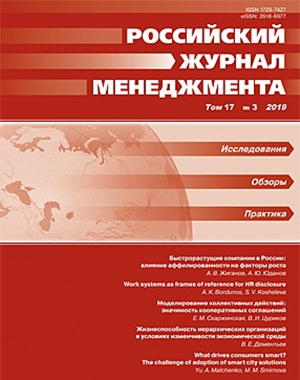What Drives Consumers Smart? The challenge of Adoption of Smart City Solutions
DOI:
https://doi.org/10.21638/spbu18.2019.305Аннотация
Following increasing usage of digital technology-based solutions, many cities pushed the concept of smartness for efficient utilisation of limited resources. Smart cities require close collaboration between the city governance, business, and consumer communities to develop solutions for various circles of stakeholders. While most of studies in this field focused on digital technology, the importance of citizen-centric approach has gathered the momentum. However, there is a lack of research on adoption of smart city solutions by citizens. In practice, while consumer feedback was proposed, factors enhancing consumer willingness to adopt smart city solutions were not identified. This study aims to propose a framework by introducing an integrative citizen-centric bottom up approach based on consolidation of insights from literature dedicated to innovation adoption and smart city solutions. The suggested framework is accompanied by propositions for future research focusing on digital natives as future consumers of smart solutions.
Ключевые слова:
smart city solutions, innovation adoption, consumer adoption, willingness to adopt, citizen-centric approach, bottom-up approach
Скачивания
Библиографические ссылки
REFERENCES
Загрузки
Опубликован
Как цитировать
Выпуск
Раздел
Лицензия
Статьи журнала «Российский журнал менеджмента» находятся в открытом доступе и распространяются в соответствии с условиями Лицензионного Договора с Санкт-Петербургским государственным университетом, который бесплатно предоставляет авторам неограниченное распространение и самостоятельное архивирование.





